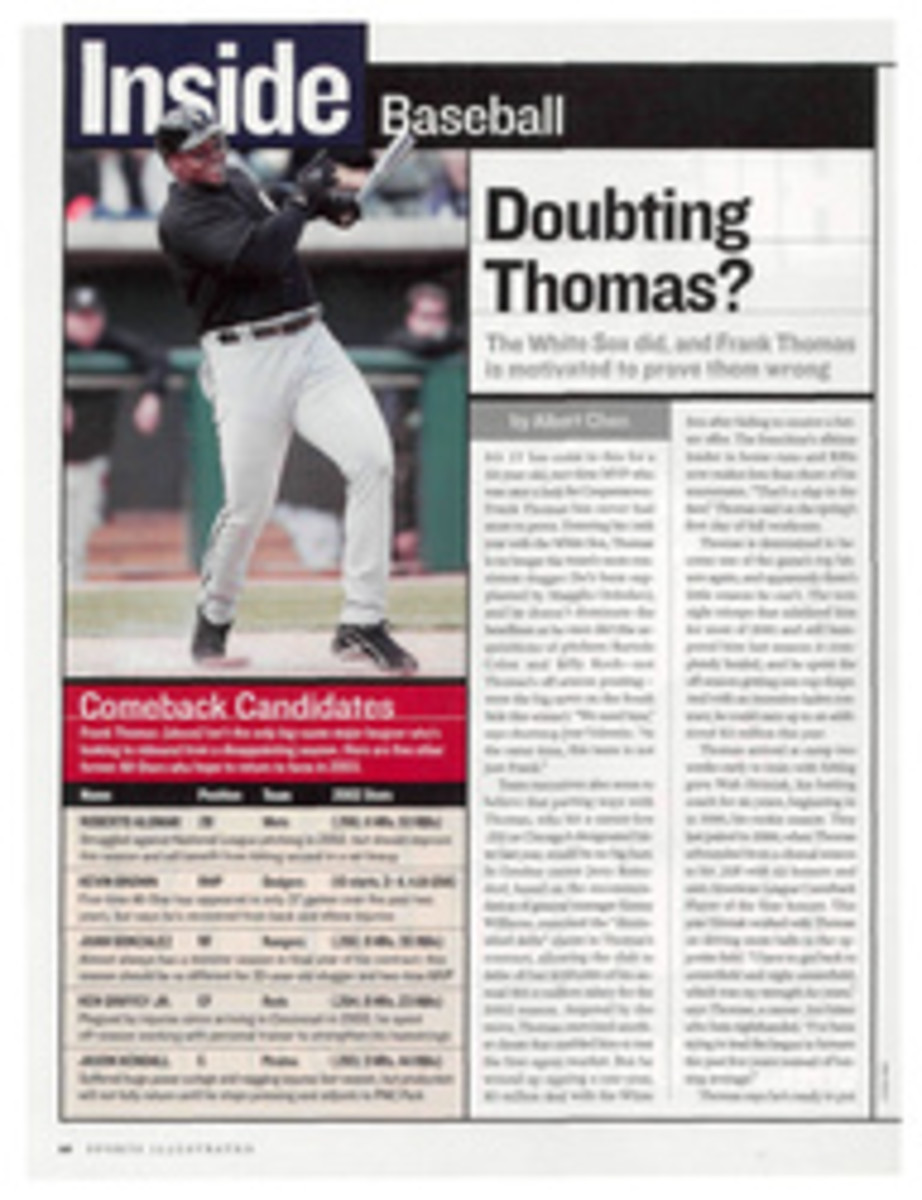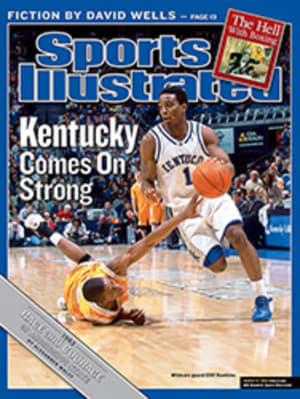
Dyrol Burleson, Miler MAY 30, 1960
As a precocious teenager growing up in Cottage Grove, Ore., in
1954, Dyrol Burleson set three goals: run a sub-four-minute mile
as Roger Bannister had in making history earlier that year,
appear on the cover of a fledgling sports weekly and work as a
park ranger. "When I saw Roger Bannister on the cover of SI as
[the first] Sportsman of the Year, I knew that's what I wanted to
do," Burleson says. "The mile was really something back then."
Within 12 years Burleson reached all three objectives, and now,
at 62, he's happily retired. When not tending to three sheep and
two llamas on his five acres in Turner, Ore., an hour from the
Cascade Mountain Range, Burleson exercises, dabbles in the stock
market and travels with his wife of eight years, Deberra.
Burleson was a 20-year-old sophomore at Oregon when, on April 23,
1960, he became the second American to break the four-minute
barrier, running a 3:58.6 that beat Don Bowden's U.S. record by
one tenth of a second. Five weeks later he shared the SI cover
with Australian world-record holder Herb Elliott in advance of a
race in which they were to meet for the first time. (However, a
heel injury the day of the race prevented Elliott from
competing.) Burleson went on to an undefeated collegiate career,
helping the Ducks win the '62 NCAA outdoor championship, and ran
the 1,500 meters in the '60 Rome and '64 Tokyo Olympics,
finishing sixth and fifth, respectively. A pulled calf muscle
before the '68 U.S. trials cost him a shot at going to the Mexico
City Olympics that year. He would finish his career with more
than a dozen sub-four-minute miles and share the SI cover one
more time (the Tokyo Games preview issue) before running his last
competitive race, in '69.
All the while Burleson was earning a master's in parks
administration and, in 1966, beginning his career as an
administrator for the Linn County, Ore., regional park system.
His fascination with the parks service began when he saw his
first ranger during a childhood trip to Redwood National Park in
California. "I couldn't believe somebody could make a living
doing that," he says. "Because there was no money in running, I
knew I was going to have a parks career. But instead of a uniform
and a horse, I had a tie and a desk."
After 31 years with the Linn County system, Burleson retired in
1997. But he has no plans to give up running, though knee surgery
in '95 forced him to scale back from 50 miles a week to about
30--and at a pace that he likens to a jog. "I don't call what I
do now running. That's when you're doing somewhere around six
minutes a mile," says Burleson, who has two grown daughters from
his first marriage, which ended in divorce after 17 years. "But I
never ran for time; I always ran to win." --Farrell Evans
COLOR PHOTO: JERRY COOKE (COVER) HOOFING IT Burleson (cover, right) was a two-time Olympian and, at 62, can still run rings around his llama.
COLOR PHOTO: RICH FRISHMAN [See caption above]
The second American to break the four-minute barrier, Burleson
met another goal with a career in the parks service.

